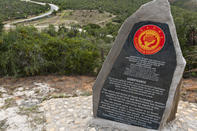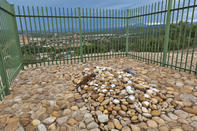Hottentot Venus
Sarah Baartman (also known as Saartjie Baartman) is a famous Khoisan woman who was taken to Europe to be ‘exhibited’ for her unique physical appearance.

Baartman lived by the Gamtoos River in the Eastern Cape in the 1700s, and was sold as a slave to a Dutch colonialist. She was then taken to Cape Town where she became a domestic servant, and got the name ‘Saartjie’.
In the early 1800s, Baartman was persuaded by an English surgeon named William Dunlop to go to England, as part of a contract she ‘signed’, which is questionable because Baartman was illiterate. When she arrived, Baartman worked as a domestic servant, as well as ‘displayed’ for entertainment purposes, viewed as an anthropological freak. According to the contract, she would be entitled to a ‘portion’ of her earnings, and be allowed to return to South Africa after 5 years.
Science Specimen

Baartman was an object of fascination to colonial Europeans - she had large buttocks and oddly curvaceous body for European standards. As they believed they were racially superior, the Europeans objectified Baartman, having her pose half-naked in a cage. She became a famous ‘attraction’ and people would pay to see her.
Her image swept through British popular culture. After a few years in England, she was transferred to France where she was sold to a man who exhibited animals. She was made to follow orders like a circus animal, and gained further attention from people who found her appearance captivating.
A naturalist named George Cuvier heard of Baartman and took her to be studied as a ‘science specimen’ by French anatomists, zoologists and physiologists. She was thus used as a framework for stereotyping African people as lesser intelligence based on their appearance, and the foundation on which European scientists built their ideology of Africans, specifically black female.
Baartman died in 1816. Although the cause of her death is unknown, in 1994 the South African government asked for her remains to be returned to South Africa. This process took eight years, but eventually, she was laid to rest in Hankey, Eastern Cape. A memorial plaque was put at the burial site to honour her memory.